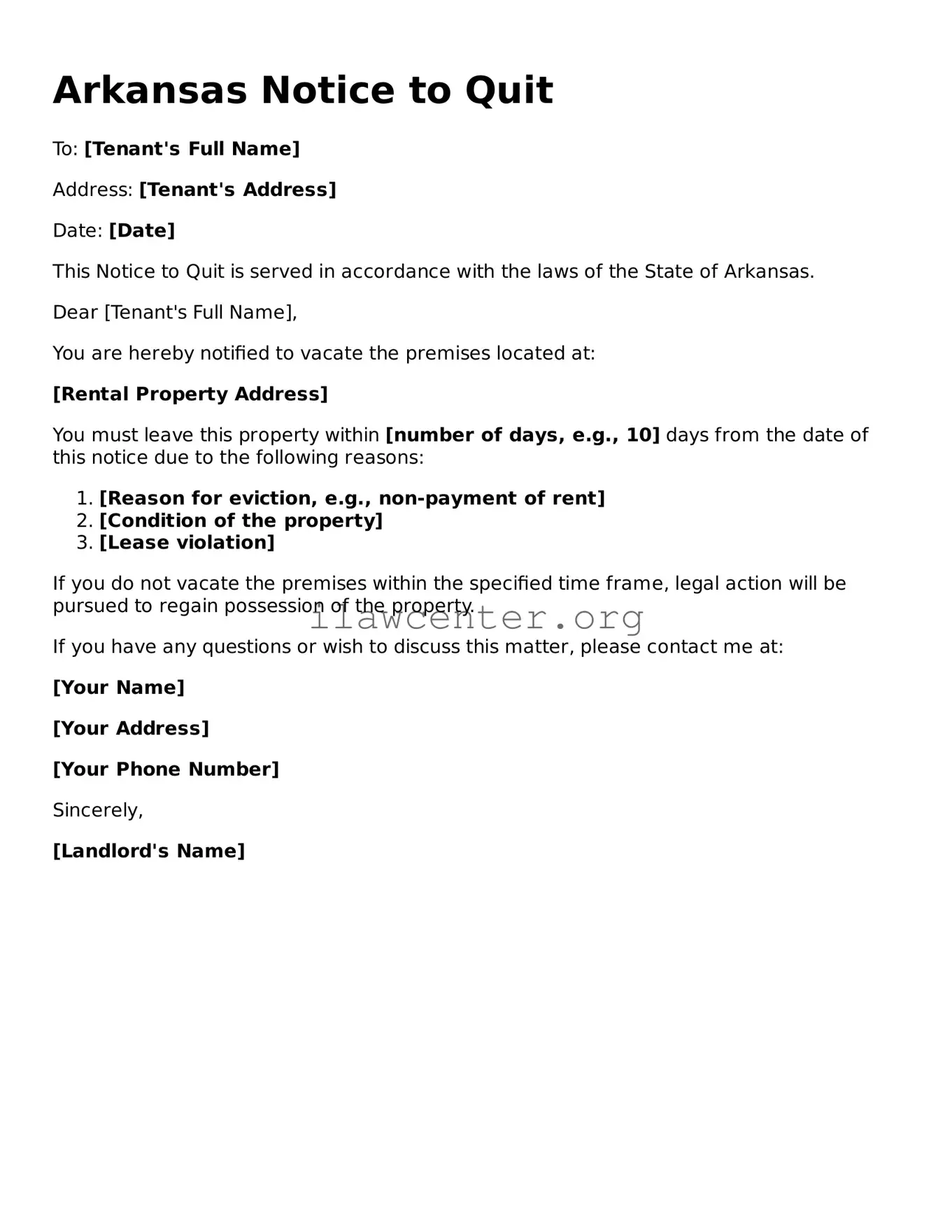What is an Arkansas Notice to Quit form?
The Arkansas Notice to Quit form is a legal document that landlords use to inform tenants that they must vacate the rental property. This notice is often required before initiating formal eviction proceedings. It provides a basis for the landlord to reclaim possession of the property, ensuring compliance with state laws regarding eviction processes.
When should a landlord use a Notice to Quit?
A landlord may use a Notice to Quit in various situations. Common reasons include non-payment of rent, violations of lease terms, or expiration of the rental agreement. It serves as a formal reminder to the tenant about their obligations, allowing them an opportunity to rectify the situation before eviction proceedings begin.
What information should be included in the Notice to Quit?
The Notice to Quit should include essential information such as the date, the tenant's name, the property address, the reason for the notice, and the deadline by which the tenant must vacate the property. Clarity and specificity are important to ensure the tenant understands the situation and their rights.
How much notice is required in Arkansas?
In Arkansas, the amount of notice required can vary depending on the situation. Generally, landlords must provide at least 14 days for tenants to vacate when there’s a non-payment of rent, while a 30-day notice is typically applicable for lease violations. Each case may have unique circumstances, so it's important to adhere to the specific legal requirements outlined in state law.
Can a tenant dispute a Notice to Quit?
Yes, tenants have the right to dispute a Notice to Quit. If a tenant believes the notice was improperly issued or finds the reasons stated in the notice to be inaccurate, they can respond to the landlord. Additionally, if the tenant corrects the issues raised in the notice, they may not need to vacate the property, depending on the situation.
What happens if a tenant does not comply with the Notice to Quit?
If a tenant fails to comply with the Notice to Quit, the landlord may proceed with eviction proceedings. This typically involves filing a complaint with the local court. It is important for both parties to be aware of their rights during this process, as tenants may have defenses or options available to them.
Is a written Notice to Quit necessary?
Yes, a written Notice to Quit is necessary. Oral notices may not hold up legally in Arkansas. A written document provides clear evidence of the landlord's intent and the notice requirement as per state law. Keeping a copy of the notice for record-keeping purposes is also advisable.
Where can I find a template for the Notice to Quit?
Templates for the Arkansas Notice to Quit can be found through various legal aid websites, or they may be provided by local housing authorities. Additionally, consulting with a legal professional can help ensure that the notice is properly drafted and compliant with state requirements.
What should a tenant do upon receiving a Notice to Quit?
Upon receiving a Notice to Quit, a tenant should carefully read the document to understand the reasons for the notice and the time frame given to comply. It's important to address any issues raised, whether that means paying overdue rent or fixing lease violations. Seeking legal advice can also provide assistance in navigating the situation effectively.
